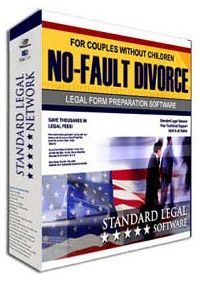Types of Divorce
Fault vs. No-fault Divorce
In 1970, California changed the way people looked at divorce as well as the ease at which they could get out of a marriage by passing the first no-fault divorce law in the United States. Before that, in order to get a divorce, one spouse had to have done something wrong -- be "at fault" for the failure of the marriage. Those wrongdoings are called "grounds for divorce" and include adultery, physical or mental cruelty, desertion, confinement in prison, physical incapacity (for the purpose of sexual intercourse) and incurable insanity. If the defending spouse didn't want the divorce, he or she had to deny what they were being accused of and defend himself or herself in court.
While many states still allow fault divorces, they all also allow no-fault divorces. No-fault divorces are just what they sound like: No one is at fault for the failure of the marriage. Even if there were some misconduct, it doesn't matter in a no-fault divorce. The basis for dissolving the union may simply be "incompatibilities" or "irreconcilable differences." There usually doesn't have to be any explanation or proof of a problem. In most states, it doesn't matter if the other spouse consents to the divorce or not.
Advertisement
Contested vs. Uncontested Divorce
A divorce is uncontested if one spouse either:
- Doesn't respond to the spouse's request for divorce or to the spouse's decisions regarding division of marital property and debts and child support, alimony and child-custody issues
- Doesn't legally dispute the spouse's decisions
- Agrees on every detail (also referred to as a divorce by agreement)
If an agreement can't be reached on every issue, then it is a contested divorce, and the couple has to take the issues before a judge. Contested divorces cost a lot more and usually create a lot more turmoil.
Simplified Divorce
Some states allow a simplified divorce, which speeds up the divorce process and usually keeps it out of court. Simplified divorces are uncontested, no-fault divorces with no disagreements on the settlement.
State laws differ on simplified divorce, but usually it is a less expensive and less stressful way to go. Some states require only that you fill out forms and have a judge approve your settlement agreement. Others will only allow you to seek a simplified divorce if there are no dependent children (under 18) and no outstanding financial debts involved. Simplified divorces are usually granted very quickly (30 days after filing is common).
State Variations
All states have different divorce laws. While there is a Uniform Marriage and Divorce Act that some states have adopted, details and procedures still vary wildly. Some states have also adopted the Uniform Divorce Recognition Act, which requires that the divorce be filed in the state where both spouses live. If they get a divorce in a different state, their state of residence won't recognize it, causing big problems down the road if one of them wants to remarry.
Even states that haven't adopted the Uniform Divorce Recognition Act usually have a residency requirement for divorces, meaning you have to have lived in that state for a specified length of time before you can file for divorce there. Because some states also have requirements for lengthy separations before divorces can be final, people seeking quick divorces often move temporarily to states that have shorter separation periods just to get their divorces faster.
